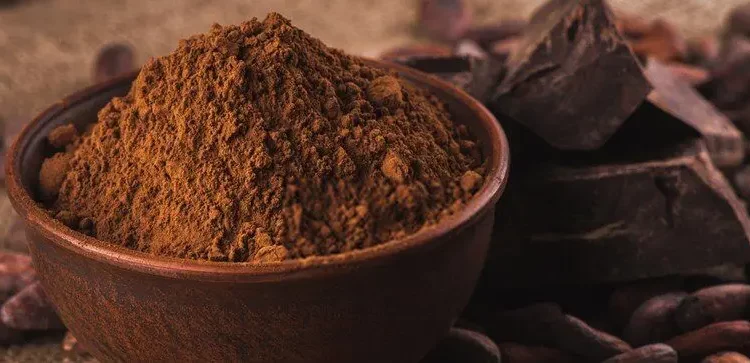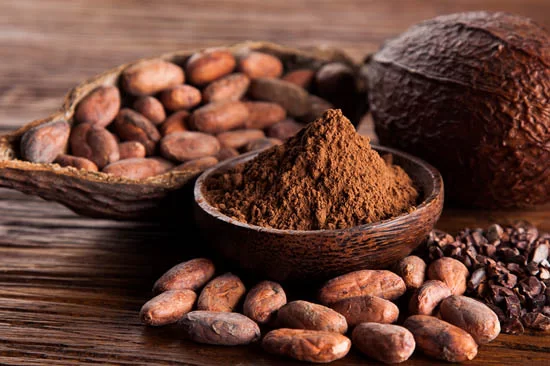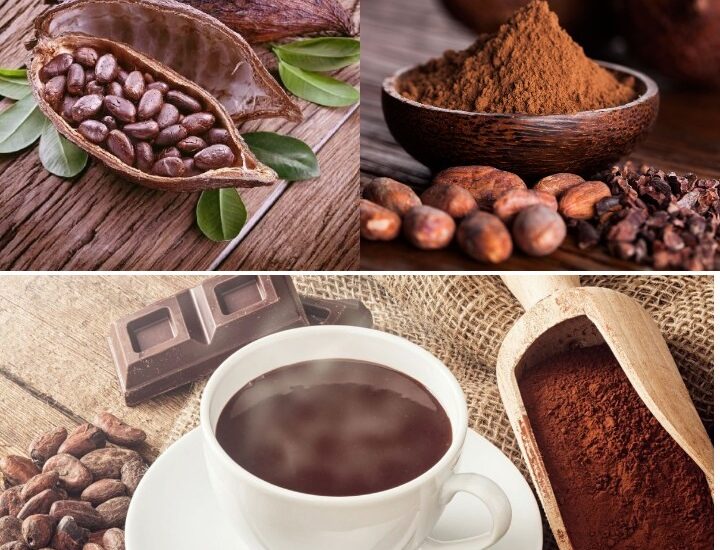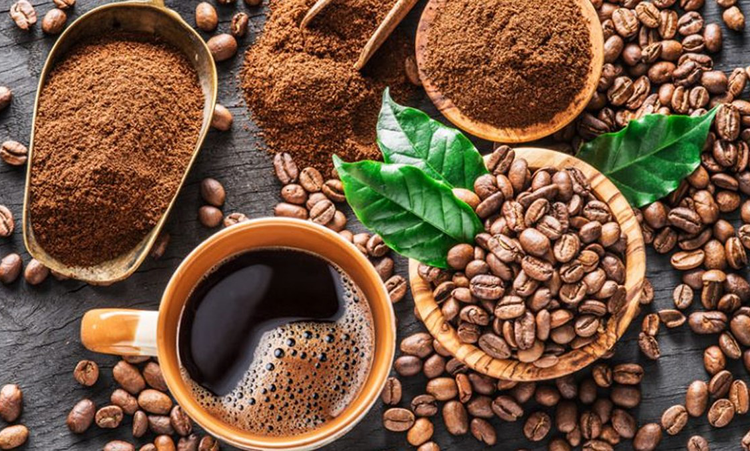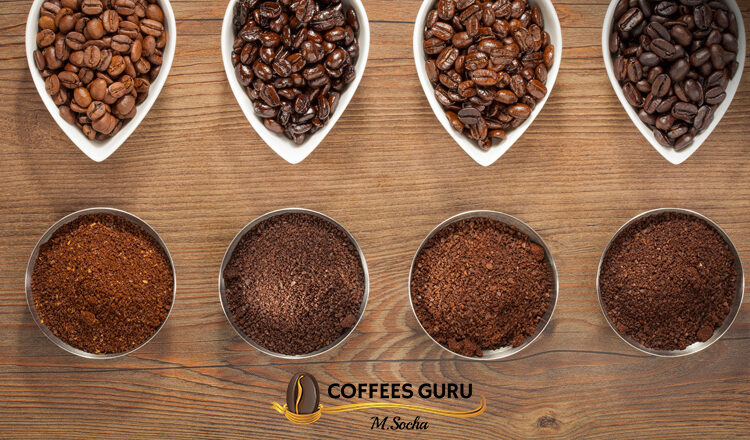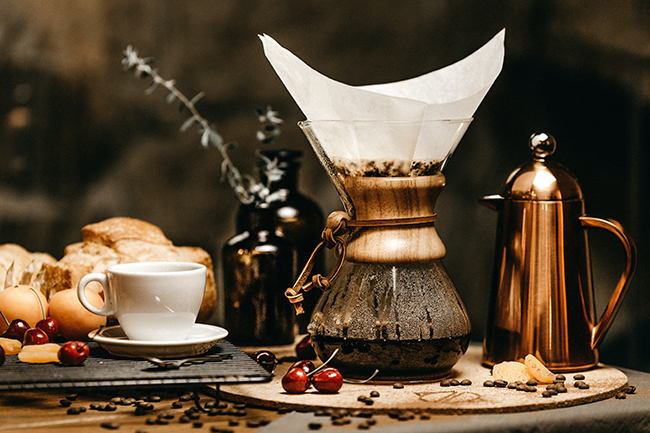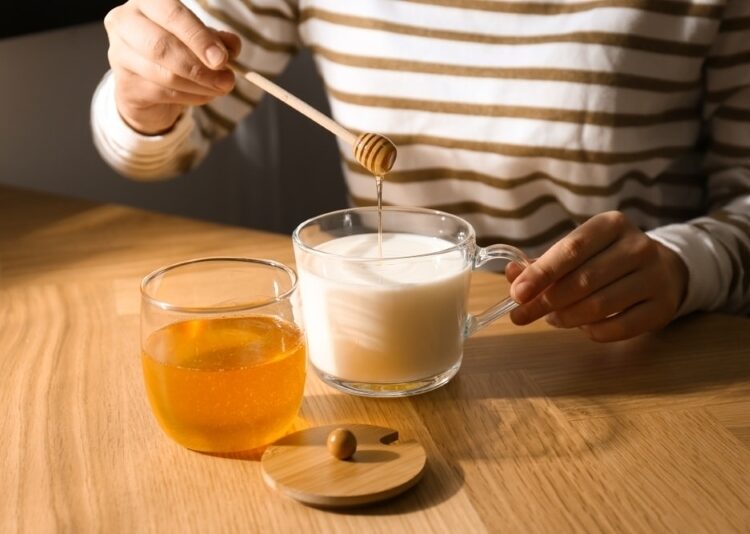Unlock the Perfect Brew: Exploring 5 Delicious Ways to Make Coffee
Coffee, for many, is more than just a morning pick-me-up; it’s a ritual, an art form, and a source of immense pleasure. While instant coffee might offer convenience, exploring different brewing methods can unlock a world of nuanced flavors and aromas hidden within those roasted beans. Whether you prefer a bold and intense cup or a smooth and delicate brew, there’s a coffee brewing method out there for you. This article will guide you through five popular and delicious ways to make coffee at home, empowering you to elevate your daily coffee experience.
1. The Foundation of Flavor: Quality Beans and Fresh Grinding – A Non-Negotiable First Step
Before we delve into specific brewing methods, it’s crucial to emphasize the importance of using high-quality, freshly roasted coffee beans. Just like any culinary endeavor, the quality of your ingredients will significantly impact the final result. Opt for whole beans from reputable roasters and store them in an airtight container away from light, heat, and moisture.
Equally important is grinding your beans just before you brew. Pre-ground coffee loses its flavor and aroma quickly due to oxidation. Investing in a good quality burr grinder is highly recommended as it provides a consistent grind size, which is essential for proper extraction. The grind size will vary depending on the brewing method you choose, so understanding these nuances is key to brewing a delicious cup.
2. Top 5 Methods for Brewing Delicious Coffee: A Step-by-Step Guide
Related articles 01:
1. https://cacaocafenewjersey.com/tu-lam-tra-sua-dai-loan-tai-nha-don-gian
2. https://cacaocafenewjersey.com/uong-bot-san-day-co-tac-dung-gi-nhung-luu-y-ban-can-nho-khi-su-dung
3. https://cacaocafenewjersey.com/the-sweet-truth-is-cacao-really-good-for-your-health
4. https://cacaocafenewjersey.com/ca-phe-cold-brew-la-gi-cach-pha-ca-phe-u-lanh-don-gian-chuan-vi
5. https://cacaocafenewjersey.com/recognizing-the-decline-key-signs-that-cocoa-has-gone-bad
-
2.1. The Classic Drip Coffee Maker: Simple, Reliable, and Consistent
-
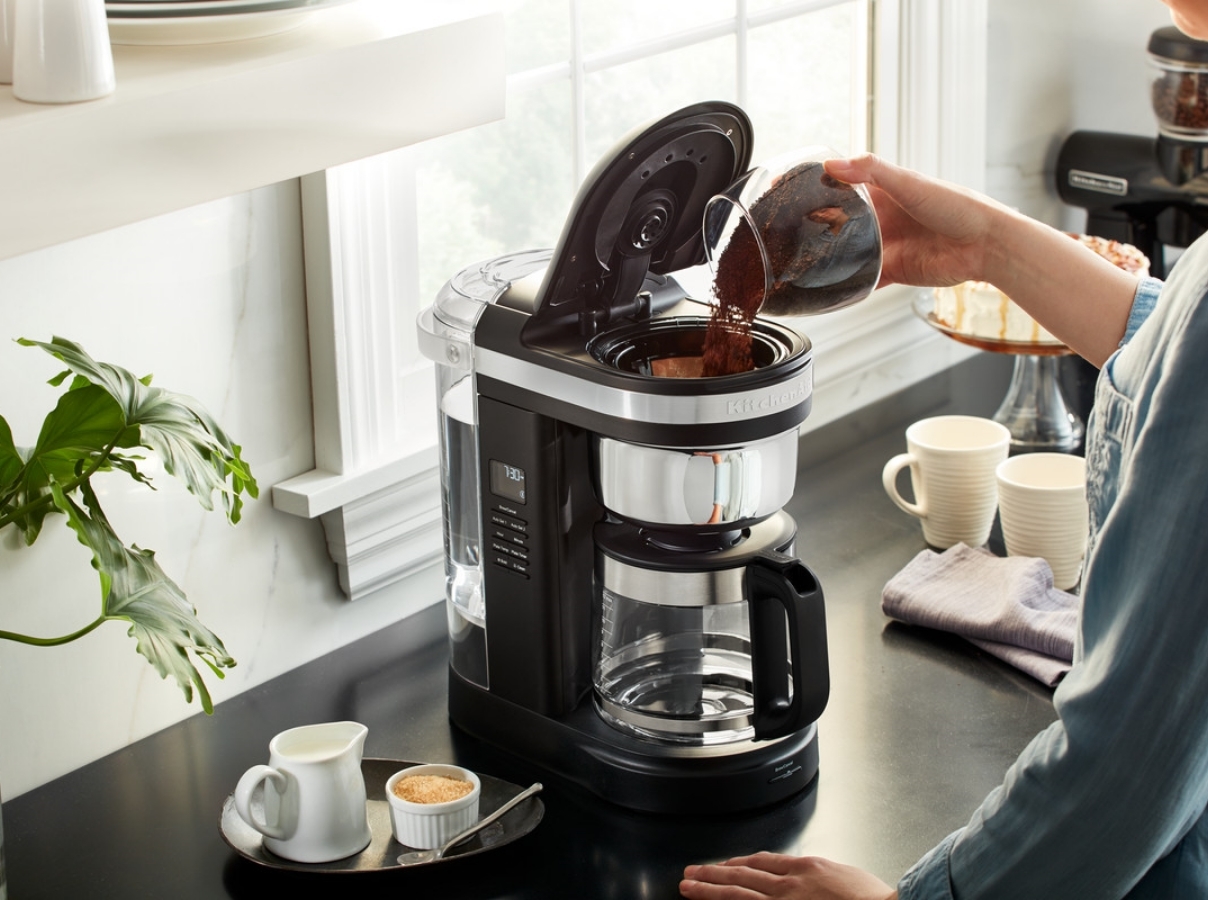 The Method: The automatic drip coffee maker is a staple in many households for its convenience and ease of use. It works by heating water and then dripping it over a bed of ground coffee in a filter.
The Method: The automatic drip coffee maker is a staple in many households for its convenience and ease of use. It works by heating water and then dripping it over a bed of ground coffee in a filter.- Equipment Needed: Drip coffee maker, paper or reusable filter, kettle (optional for heating water).
- Grind Size: Medium-fine, similar to table salt.
- Brewing Steps:
- Heat filtered water to the ideal temperature (around 195-205°F or 90-96°C).
- Place a filter in the brew basket.
- Add the ground coffee to the filter (aim for a coffee-to-water ratio of 1:15 to 1:18, meaning 1 gram of coffee for every 15-18 grams of water).
- Pour the heated water into the reservoir of the coffee maker.
- Allow the coffee maker to complete the brewing cycle.
- Characteristics: Drip coffee typically produces a clean and balanced cup with a medium body. The flavor profile can be quite nuanced depending on the beans used. Ensure your coffee maker maintains the correct water temperature for optimal extraction.
-
2.2. The Immersive French Press: Bold Flavor and Full Body
-
 The Method: The French press, also known as a cafetière, is an immersion brewing method where coffee grounds are steeped directly in hot water before being separated by a plunger with a fine mesh filter.
The Method: The French press, also known as a cafetière, is an immersion brewing method where coffee grounds are steeped directly in hot water before being separated by a plunger with a fine mesh filter.- Equipment Needed: French press, kettle.
- Grind Size: Coarse, similar to breadcrumbs. A coarser grind prevents the filter from clogging and reduces sediment in the final brew.
- Brewing Steps:
- Heat filtered water to around 200°F (93°C).
- Add the coarse ground coffee to the French press.
- Pour the hot water over the grounds, ensuring all the coffee is saturated.
- Gently stir the mixture.
- Place the lid on the French press but do not press down yet.
- Allow the coffee to steep for around 4 minutes (adjust steeping time to your preference).
- Slowly and steadily press the plunger down to separate the grounds from the brewed coffee.
- Immediately pour the coffee into a serving vessel to prevent over-extraction and a bitter taste.
- Characteristics: French press coffee is known for its full body, rich flavor, and noticeable presence of coffee oils and fine sediment, which contribute to its unique texture.
-
2.3. The Elegant Pour Over (e.g., Hario V60): Precision and Clarity
-
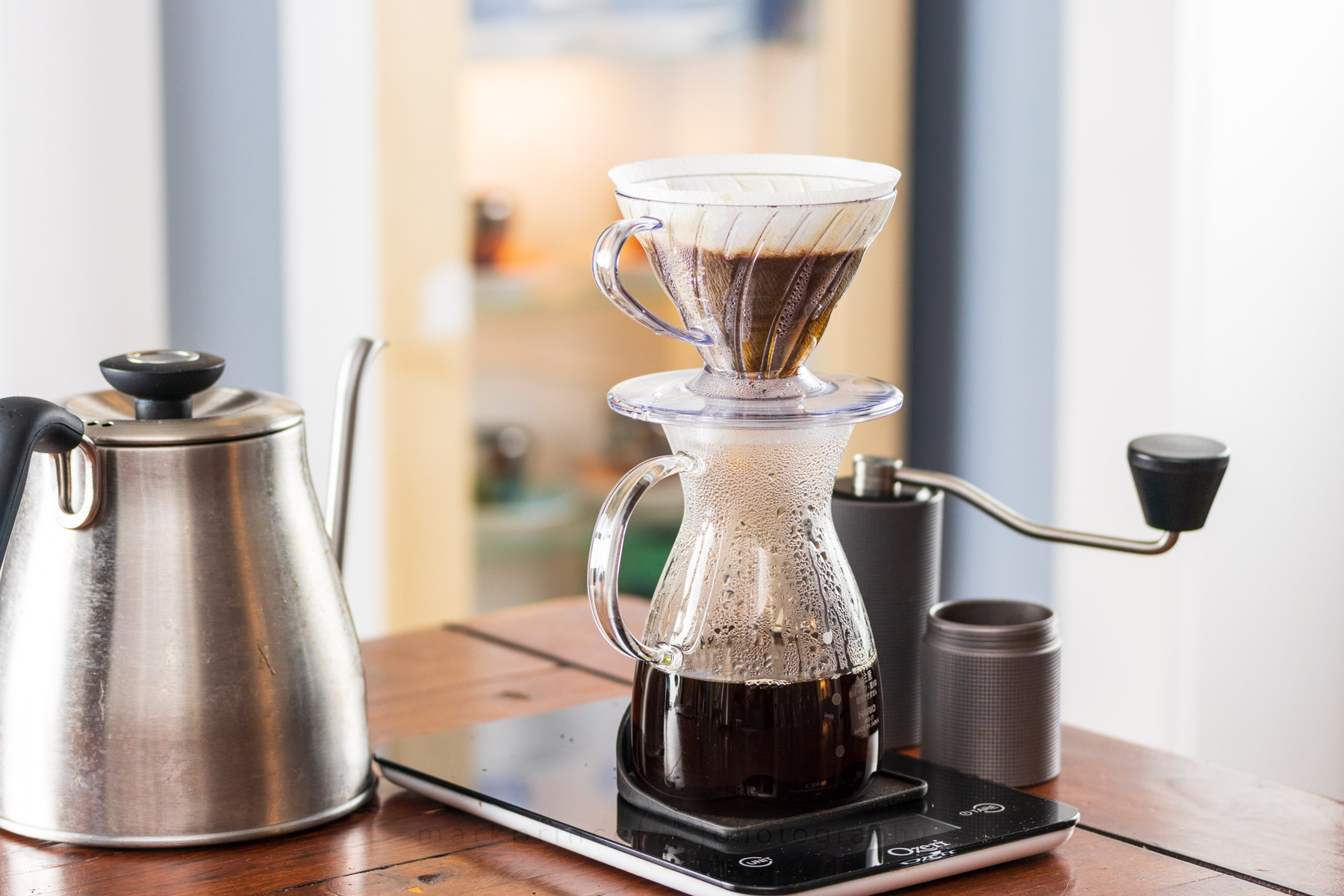 The Method: The pour-over method involves manually pouring hot water over coffee grounds held in a specialized filter cone, allowing the brewed coffee to drip directly into a cup or server. Popular pour-over devices include the Hario V60, Chemex, and Kalita Wave.
The Method: The pour-over method involves manually pouring hot water over coffee grounds held in a specialized filter cone, allowing the brewed coffee to drip directly into a cup or server. Popular pour-over devices include the Hario V60, Chemex, and Kalita Wave.- Equipment Needed: Pour-over device, paper filter (specific to the device), gooseneck kettle (for precise pouring), coffee scale, timer.
- Grind Size: Medium-coarse, slightly finer than French press.
- Brewing Steps (using a Hario V60 as an example):
- Heat filtered water to around 200°F (93°C).
- Place the V60 on top of your cup or server and insert a paper filter.
- Rinse the filter with hot water to remove any paper taste and preheat the device and cup/server. Discard the rinse water.
- Add the medium-coarse ground coffee to the filter.
- Gently tap the device to level the coffee bed.
- Slowly pour a small amount of hot water (about twice the amount of coffee) over the grounds to “bloom” them. Let it sit for 30 seconds.
- Continue pouring the remaining water in slow, circular motions, ensuring all the grounds are evenly saturated. Aim for a total brew time of around 2-3 minutes.
- Once all the water has passed through, remove the V60 and enjoy.
- Characteristics: Pour-over coffee is known for its clean, bright, and nuanced flavor profile. The controlled pouring allows for optimal extraction and highlights the subtle characteristics of the coffee beans.
-
2.4. The Versatile AeroPress: Speed, Portability, and Clean Flavor
-
 The Method: The AeroPress is a unique brewing device that uses air pressure to force coffee through a filter. It’s known for its speed, portability, and ability to produce both clean and full-bodied brews.
The Method: The AeroPress is a unique brewing device that uses air pressure to force coffee through a filter. It’s known for its speed, portability, and ability to produce both clean and full-bodied brews.- Equipment Needed: AeroPress, AeroPress filter papers, stirring paddle, scoop (often included), kettle.
- Grind Size: Can range from fine (for shorter brew times) to medium (for longer brew times). Experimentation is encouraged.
- Brewing Steps (Standard Method):
- Heat filtered water to around 175-185°F (80-85°C) for optimal flavor.
- Place one AeroPress filter paper in the filter cap and wet it with hot water. Screw the cap onto the AeroPress chamber.
- Place the AeroPress chamber (with the filter cap attached) on top of your mug.
- Add the ground coffee to the chamber.
- Pour the hot water over the grounds.
- Stir the mixture for about 10 seconds.
- Insert the plunger into the chamber and press down slowly and steadily until you hear a hissing sound.
- Remove the AeroPress and enjoy your concentrated coffee (you can add hot water to dilute it to your desired strength).
- Brewing Steps (Inverted Method – requires more caution):
- Insert the plunger into the AeroPress chamber a short way up.
- Flip the AeroPress upside down so the plunger is on the bottom.
- Add the ground coffee to the chamber.
- Pour the hot water over the grounds.
- Stir the mixture.
- Place the filter cap (with a wet filter) on top of the chamber and quickly flip the AeroPress right-side up onto your mug.
- Press down slowly and steadily on the plunger.
- Characteristics: AeroPress coffee is typically clean and smooth with a concentrated flavor. The brewing process is quick, and the resulting brew is low in acidity.
-
2.5. The Richness of Moka Pot (Stovetop Espresso): Strong and Intense
-
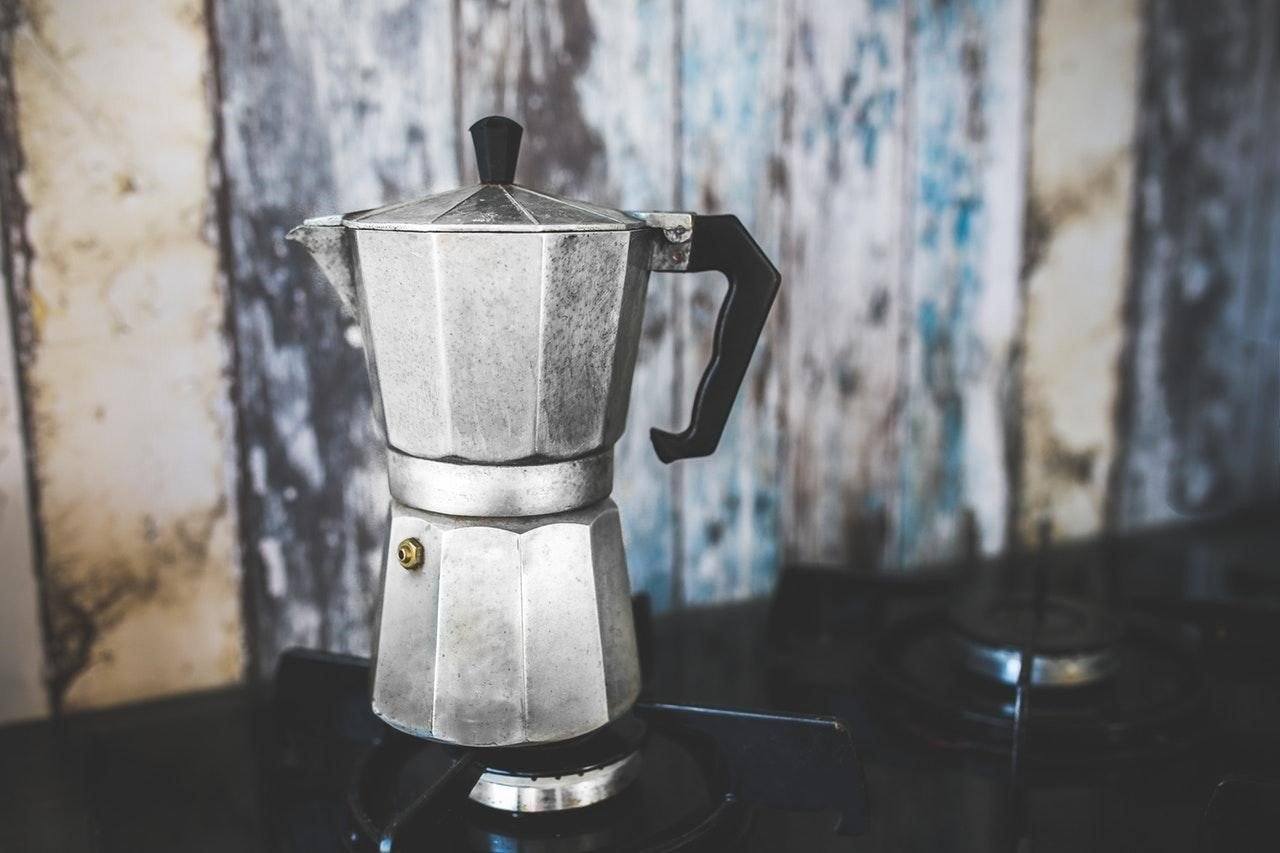 The Method: The Moka pot, also known as a stovetop espresso maker, uses steam pressure to force hot water through ground coffee, producing a strong, concentrated coffee similar to espresso.
The Method: The Moka pot, also known as a stovetop espresso maker, uses steam pressure to force hot water through ground coffee, producing a strong, concentrated coffee similar to espresso.- Equipment Needed: Moka pot, kettle.
- Grind Size: Fine, similar to espresso grounds.
- Brewing Steps:
- Fill the bottom chamber of the Moka pot with hot water up to the fill line.
- Insert the filter basket into the bottom chamber and fill it with finely ground coffee, leveling it but not tamping it down.
- Screw the top chamber onto the bottom chamber tightly.
- Place the Moka pot on the stovetop over medium heat.
- As the water heats, steam pressure will build and force the hot water through the coffee grounds into the top chamber.
- Once the top chamber is about two-thirds full and the flow of coffee starts to sputter, remove the Moka pot from the heat to prevent a burnt taste.
- Pour the coffee immediately and enjoy.
- Characteristics: Moka pot coffee is strong, rich, and has a concentrated flavor, often with a slightly bitter edge if over-extracted. It’s a great option for those who enjoy a coffee similar in strength to espresso.
3. Key Factors for Brewing Great Coffee: Beyond the Method
Regardless of the brewing method you choose, several key factors will significantly impact the quality of your final cup:
Related articles 02:
1. https://cacaocafenewjersey.com/ca-phe-cold-brew-la-gi-cach-pha-ca-phe-u-lanh-don-gian-chuan-vi
2. https://cacaocafenewjersey.com/cach-pha-matcha-latte-theo-cong-thuc-cua-starbucks
3. https://cacaocafenewjersey.com/why-choose-an-online-business-management-degree
4. https://cacaocafenewjersey.com/cach-phan-biet-cocktail-va-mocktail
5. https://cacaocafenewjersey.com/bot-frappe-va-cong-dung-trong-pha-che
- Water Quality: Use filtered water whenever possible, as tap water can contain minerals and chemicals that negatively affect the taste of your coffee.
- Water Temperature: As mentioned in the brewing steps, using water within the ideal temperature range is crucial for optimal extraction. Too cold, and the coffee will be under-extracted and sour; too hot, and it will be over-extracted and bitter.
- Coffee-to-Water Ratio: Finding the right balance between coffee grounds and water is essential for a well-balanced brew. Experiment with different ratios to find your preferred strength.
- Brewing Time: The amount of time the coffee grounds are in contact with the water will also affect the taste. Follow the recommended brewing times for each method as a starting point.
- Cleanliness of Equipment: Regularly cleaning your brewing equipment is vital to prevent the buildup of coffee oils and residue, which can impart a stale or bitter taste to your coffee.
4. Experimentation is Key: Discover Your Perfect Cup
The world of coffee brewing is vast and exciting. Don’t be afraid to experiment with different types of coffee beans, grind sizes, water temperatures, and brewing methods to discover your personal preferences. Each method will highlight different characteristics of the coffee beans, leading to a unique and enjoyable experience.
Conclusion: Elevating Your Coffee Ritual
Brewing delicious coffee at home doesn’t have to be complicated. By understanding the fundamentals of quality beans, proper grinding, and the nuances of different brewing methods, you can unlock a world of flavor and elevate your daily coffee ritual. Whether you prefer the convenience of a drip machine, the richness of a French press, the clarity of a pour-over, the versatility of an AeroPress, or the intensity of a Moka pot, the perfect cup of coffee is within your reach. So, invest in some quality beans, explore these brewing methods, and embark on a journey to discover your ultimate coffee brewing experience.
